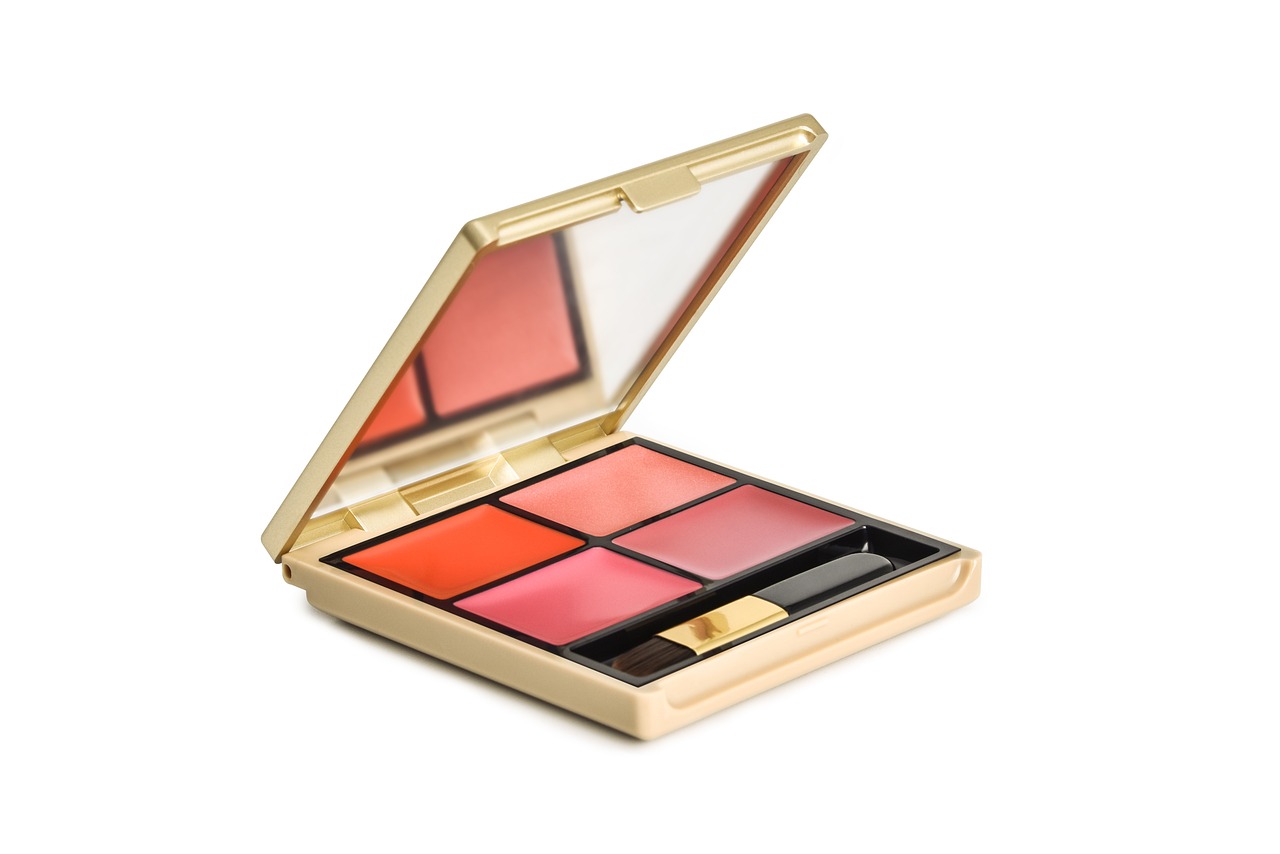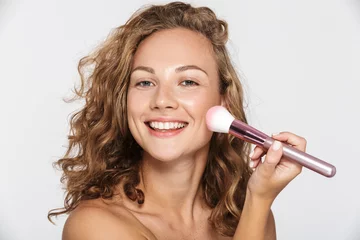Achieving a flawless yet natural-looking complexion is a goal for many. Mixing foundation with moisturizer can help create a custom coverage level that feels lightweight while still evening out skin tone. This combination not only enhances your skin’s radiance but also caters to various skin types, making it a versatile addition to your beauty routine.

Why Mix Foundation and Moisturizer?
Benefits of Customizing Your Foundation
Mixing foundation with moisturizer offers multiple benefits, including:
- Personalized Coverage: Adjust the ratio of foundation to moisturizer for sheer to medium coverage, depending on your preference.
- Lightweight Feel: Thinner coverage feels less heavy on the skin, providing a breathable finish.
- Enhanced Hydration: Moisturizer adds hydration, making this mix ideal for dry and combination skin.
- Natural Look: This blend softens the appearance of foundation, creating a more subtle, dewy glow.

Colour Changing Foundation, Makeup Foundation Cream, Flawless Colour Liquid Foundation
Understanding the Right Ratios for Your Skin Type
Understanding the Right Ratios for Your Skin Type
The key to achieving a flawless blend lies in finding the right balance of foundation to moisturizer. Below are recommended ratios based on coverage goals and skin types:
Coverage Level Ratio of Foundation to Moisturizer Skin Types Light Coverage 1 part foundation : 2 parts moisturizer Dry or sensitive skin Medium Coverage 1 part foundation : 1 part moisturizer Normal or combination skin Higher Coverage 2 parts foundation : 1 part moisturizer Oily or acne-prone skin These ratios are guidelines that you can adjust based on the foundation formula and the finish you desire.
Skin Type-Specific Tips for Mixing Foundation and Moisturizer
For Dry Skin
To boost hydration, add a few drops of hydrating serum or facial oil to your moisturizer before mixing with foundation. This method will help retain moisture and reduce the chance of dry patches appearing.
For Oily Skin
Opt for a mattifying or oil-control moisturizer to prevent excess shine. If your foundation has a matte finish, this combination can help control oil while providing a natural look.
For Combination Skin
Use an oil-free or lightweight moisturizer to avoid making oily areas too shiny. A buildable foundation formula can be helpful if you need more coverage in certain areas, like the T-zone.
For Sensitive Skin
Stick to fragrance-free, dermatologist-approved products that are less likely to irritate your skin. Test the combination on a small patch of skin to ensure it doesn’t cause any sensitivity.
Additional Considerations for Ideal Mixing
Consistency Matters
The consistency of the products you choose significantly impacts the final result. Liquid, silicone-based foundations and moisturizers are generally easier to mix and adjust. Avoid powdered foundations, as they can lead to a cakey or uneven finish.
Choosing the Perfect Foundation to Mix with Moisturizer
When it comes to mixing foundation with moisturizer, selecting the right product can make all the difference in achieving that flawless, natural look. Here’s what you need to know.
Key Considerations
- Shade Selection: Opt for a foundation slightly darker than your usual shade. The addition of moisturizer can lighten the foundation, so this adjustment ensures a better match to your natural skin tone.
- Ingredients: Choose foundations packed with skin-loving ingredients. A formula with hydrating properties or essential vitamins can enhance your skin’s health while offering coverage.
- SPF Protection: If possible, select a foundation with built-in SPF to save time and protect your skin from harmful UV rays.
Top Foundations to Consider
- Liquid Foundation: Liquid foundations are typically easier to blend with moisturizers, offering a seamless finish. They’re great for hydrating skin and provide buildable coverage. When choosing a liquid foundation to mix, consider opting for one shade darker than usual to ensure the blend matches your skin tone perfectly.
- Mineral Foundations: Mineral foundations often include sun protection and skin-beneficial ingredients. They can deliver a natural finish, making them ideal for mixing with a moisturizer. Look for formulas that contain nourishing elements like vitamins or peptides, which can enhance skin health while providing coverage.
- Tinted Moisturizers: These are essentially pre-mixed versions of foundation and moisturizer, providing a lightweight option that hydrates while evening out your complexion. They simplify your routine and are perfect for a casual, everyday look. Ensure they contain SPF for added sun protection.
- BB Creams: Known for their all-in-one approach, BB creams combine moisturizer, primer, and foundation with additional skincare benefits. They offer a multi-tasking solution, perfect for those who want to streamline their beauty regimen without sacrificing skin care.
Additional Tips for Mixing Foundation and Moisturizer
- Adjusting Shades: When mixing, the foundation may lighten slightly. Consider using a foundation that’s a touch darker than your skin tone to counteract this effect.
- Choosing the Right Moisturizer: Select a moisturizer with a thinner consistency and gentle ingredients. This ensures it blends well with the foundation and maintains the hydrating benefits without feeling heavy on the skin.
- Mixing Method: For powder foundations, gently scrape the surface to create a blendable texture with your moisturizer. This technique can help achieve a smooth, even application.
By selecting the right foundation type and following these mixing tips, you can create a custom blend that enhances your natural beauty and complements your skincare routine.
Application Tips
- Thinner Consistency: Choose a moisturizer with a lighter texture to avoid a cakey appearance when mixed with foundation.
- Custom Blending: Adjust the ratio of foundation to moisturizer to suit your desired level of coverage – more moisturizer for a sheer glow, more foundation for additional coverage.
- Test and Try: Before applying to your entire face, test your mixture on a small patch to ensure the color and consistency are to your liking.
By understanding these key factors and selecting the right products, you can enjoy a beautiful, effortless complexion that enhances your natural beauty.
Ingredient Compatibility
Before blending your products, it’s essential to review the ingredient lists for compatibility. Conflicting ingredients, like Retinols and AHAs/BHAs, can cause irritation, while similar ingredients, such as salicylic acid, might lead to over-exposure and skin issues. Ensure that both products complement each other to protect your skin from adverse reactions.
By considering these factors, you can create a customized blend that enhances your natural beauty while ensuring your skin remains healthy and radiant.

Discover the Ultimate Foundation: Alexa’s Top Picks!
What’s Your Makeup Routine? Tips for Every Step! Choosing the right foundation can be a transformative part of your beauty routine, creating a flawless base that enhances and supports your skin’s natural beauty. In this guide, we’ll walk you through Alexa’s top foundation picks, tailored to a variety of skin types and tones. With insights…
Step-by-Step Guide to Mixing Foundation with Moisturizer
To achieve a consistent, well-blended result, follow these steps:
- Select the Right Products
Choose a foundation that complements your skin tone and matches your undertones. Opt for a lightweight moisturizer that won’t interfere with the foundation’s texture. For an extra glow, a hydrating or illuminating moisturizer is ideal. - Consistency Matters
- The consistency of your moisturizer and foundation can make or break your look. Selecting the right products ensures a seamless application without the dreaded cake or separation.
- Silicone-based, Liquid Products: These are generally preferred for a smoother finish. They allow you to adjust the texture as you go, giving you more control over the final result.
- Avoid Powder Foundations: While powder can seem convenient, it often leaves more room for error. It’s more challenging to blend and can lead to an uneven appearance if not applied carefully.
Tips for Flawless Application
- Hydration is Key: A hydrating moisturizer not only nourishes your skin but also prepares it for the foundation, ensuring it adheres well and lasts longer.
- Consider the Finish: If you’re aiming for a dewy look, choose illuminating products to add that extra glow.
- By understanding and selecting the right consistency, you can effortlessly enhance your natural beauty, ensuring your makeup looks fresh and flawless all day.
- Determine Your Ratio
Based on your skin type and desired coverage level, select a foundation-to-moisturizer ratio from the table above. - Combine in Your Palm or on a Mixing Palette
Add the foundation and moisturizer in the chosen ratio onto the back of your hand or a small mixing palette. Use a clean makeup spatula or the back of a makeup brush to blend them together until smooth. - Test the Shade
Apply a small amount to your jawline to ensure the color and consistency work well on your skin. - Apply with Fingers, Brush, or Sponge
For a more natural finish, use your fingers to apply. Alternatively, a makeup sponge or foundation brush can provide a more polished look. Start in the center of your face and blend outward for an even, radiant finish.
Mixing foundation with moisturizer offers multiple benefits, including:
- Personalized Coverage: Adjust the ratio of foundation to moisturizer for sheer to medium coverage, depending on your preference. This customization is perfect for tailoring the product to your skin type and daily routine, especially if you have sensitive skin.
- Lightweight Feel: Thinner coverage feels less heavy on the skin, providing a breathable finish. This allows you to enjoy makeup that feels effortless throughout the day, minimizing the need for constant touch-ups.
- Enhanced Hydration: Moisturizer adds hydration, making this mix ideal for dry and combination skin. Unlike many retail products, this blend locks in moisture all day, leaving your skin feeling plump and quenched.
- Natural Look: This blend softens the appearance of foundation, creating a more subtle, dewy glow. The result is a fresh, natural finish that enhances your skin’s natural beauty without looking overdone.
- Long-Lasting Wear: Enjoy makeup that lasts, reducing the need for frequent reapplication. A homemade tinted moisturizer maintains its hold, allowing you to focus on your day without worrying about your makeup fading.
- Skin Protection and Healing: Combining your moisturizer with foundation not only shields your skin from pollutants but also aids in its recovery. This dual action helps maintain healthier skin, even with daily makeup use.
- By integrating these benefits, a homemade tinted moisturizer provides a versatile, skin-friendly option for anyone looking to enhance their beauty routine with a personal touch.Build Gradually if Needed
If you want additional coverage in certain areas, layer a small amount of foundation directly on top, blending seamlessly.
How to Ensure Compatibility Between Your Foundation and Moisturizer
When it comes to achieving flawless skin, the pairing of your foundation and moisturizer plays a crucial role. Ensuring these two products complement each other can prevent skin issues like irritation and over-exfoliation. Here’s how to ensure they’re a perfect match:
- Check Ingredient Lists
- Start by examining the ingredients in both your foundation and moisturizer. Look for any ingredients that might clash, such as Retinols paired with AHAs or BHAs. These can lead to adverse reactions when used together.
- Avoid Similar Active Ingredients
- If both products contain similar actives like salicylic acid, using them together could increase the concentration on your skin. This heightened level could lead to peeling, redness, or even burning sensations.
- Conduct a Patch Test
- Before full application, test the combination on a small area of your skin. This can help you detect any potential irritation or allergic reactions without affecting your entire face.
Consider Texture and Finish
- Select a moisturizer with a texture that complements your foundation. For example, if your foundation is matte, a lightweight moisturizer might be ideal. Conversely, a richer, oil-based moisturizer could pair well with a dewy foundation for a glowing look.
- Balance Your Skin Needs
- Choose products that cater to your specific skin type. For oily skin, opt for oil-free and non-comedogenic formulations. If you have dry skin, look for hydrating and nourishing formulas.
- Seek Expert Advice
- When in doubt, consult a dermatologist or skincare professional. They can provide guidance tailored to your skin’s needs and help you choose products that work harmoniously.
By following these guidelines, you can create a skincare and makeup routine that enhances your natural beauty while keeping your skin healthy and vibrant.

Solving Long-Wear Foundation Challenges: A Guide to All-Day Coverage
Achieving Flawless, Long-Lasting Foundation Without Cakeyness Long-wear foundation is a game-changer in beauty for busy lives, offering reliable coverage from morning to night. But for many, long-lasting coverage comes with a trade-off: cakey texture, dryness, or a patchy appearance as the day wears on. This guide reveals solutions for solving long-wear foundation challenges, so you…
Skin Type-Specific Tips for Mixing Foundation and Moisturizer
For Dry Skin
To boost hydration, add a few drops of hydrating serum or facial oil to your moisturizer before mixing with foundation. This method will help retain moisture and reduce the chance of dry patches appearing.
For Oily Skin
Opt for a mattifying or oil-control moisturizer to prevent excess shine. If your foundation has a matte finish, this combination can help control oil while providing a natural look.
For Combination Skin
Use an oil-free or lightweight moisturizer to avoid making oily areas too shiny. A buildable foundation formula can be helpful if you need more coverage in certain areas, like the T-zone.
For Sensitive Skin
Stick to fragrance-free, dermatologist-approved products that are less likely to irritate your skin. Test the combination on a small patch of skin to ensure it doesn’t cause any sensitivity.

Finding Your Perfect Match: Foundation for Problem Skin Finding the perfect foundation can feel like searching for a needle in a haystack, especially if you have sensitive, oily, acne-prone skin with large pores. It’s a delicate balance of coverage, oil control, and skin health. Fear not! This guide will help you navigate the world of…
Enhancing Your Routine with Additional Products
While foundation and moisturizer are the main stars, incorporating these products can elevate your look even further:
- Setting Spray: Lock in your makeup with a hydrating setting spray for a radiant glow or a matte finish, depending on your skin’s needs.
- Highlighter: Mix a small amount of liquid highlighter with your foundation-moisturizer blend for added luminosity.
- Primer: If you need extra longevity, apply a lightweight primer before the foundation-moisturizer mix to help everything stay in place.

From Basic to Breathtaking: 3 Easy Makeup Hacks You Need to Try!
Makeup doesn’t have to be complicated to look incredible. Whether you’re a makeup beginner or just looking for some new techniques, these scientifically-backed and dermatologist-approved hacks can elevate your routine. Discover how to go from basic to breathtaking with just a few tweaks that personalize your look for any occasion. Why Makeup Hacks Matter Makeup…
FAQs
Q1: Can I mix any type of foundation with moisturizer?
Yes, most liquid foundations work well when mixed with moisturizer. Avoid mixing with powder or stick foundations, as they don’t blend smoothly. For a dewy finish, try using hydrating or illuminating foundations with a compatible moisturizer.
Q2: What kind of moisturizer should I use?
Choose a moisturizer that suits your skin type. For dry skin, a richer, hydrating moisturizer works best, while for oily skin, an oil-free or mattifying moisturizer is ideal. Avoid thick, heavy moisturizers, as they may affect the blendability of the foundation.
Q3: Does mixing foundation with moisturizer affect its SPF protection
Yes, mixing foundation with moisturizer can dilute the SPF in your foundation. To maintain adequate sun protection, consider using a separate sunscreen underneath or choose a moisturizer with SPF to complement your makeup.
Q4: How long does the foundation-moisturizer blend last on the skin?
The wear time depends on your skin type and the foundation formula. Mixing with moisturizer may slightly reduce the foundation’s staying power, so for longer wear, use a setting spray or lightweight primer to help it last.
Q5: Can I mix foundation with other skincare products, like serums or oils?
Yes, you can! For extra hydration, add a few drops of a hydrating serum or facial oil to your blend. However, be cautious with oils if you have oily skin, as they can reduce foundation longevity.
Q6: How do I know if I’m using the right ratio?
Experiment with different ratios based on the coverage you want. Start with a 1:1 ratio and adjust as needed. For lighter coverage, increase the amount of moisturizer; for more coverage, add more foundation.
Q7: Will this technique work with tinted moisturizers or BB creams?
Yes! Mixing a tinted moisturizer or BB cream with your regular moisturizer can further lighten the coverage. This is a great option for a no-makeup makeup look.
Q8: Should I use a setting powder after applying my foundation-moisturizer mix?
Setting powder is optional but recommended for oily skin types or if you want to extend the wear time. Use a light dusting on the T-zone or areas that tend to get oily.
The Risks of Mixing Incompatible Foundation and Moisturizer Ingredients
Blending products like foundation and moisturizer is a common beauty practice, but it’s vital to be mindful of ingredient compatibility to safeguard your skin.
Potential Skin Reactions
- Irritation and Sensitivity: Combining ingredients that don’t work well together can cause your skin to become irritated. For instance, certain ingredients might clash, leading to redness or heightened sensitivity.
- Over-Exfoliation: If both your foundation and moisturizer contain exfoliating agents—like Retinols and AHAs/BHAs—you risk over-exfoliating your skin. This can strip away essential oils and damage your skin’s barrier function.
Allergic Reactions
- Allergic reactions may occur when incompatible products are mixed. Ingredients that don’t harmonize could trigger allergies, resulting in itching, swelling, or rashes.
Ingredient Overload
- Increased Active Ingredients: Mixing products with similar active ingredients, such as salicylic acid, may lead to elevated concentrations. This intensification can cause burning, peeling, or uncomfortable redness.
How to Avoid These Issues
- Check Ingredient Labels: Always review the ingredient list on both products to ensure compatibility. Avoid products with clashing or redundant active ingredients.
- Conduct a Patch Test: Test new combinations on a small skin area before applying them broadly to identify potential adverse reactions.
Being vigilant about ingredient compatibility can help you maintain healthy skin while enjoying the benefits of both foundation and moisturizer.
Mixing foundation and moisturizer: Final Thoughts
Mixing foundation with moisturizer offers a tailored approach to your makeup, allowing you to create a natural, radiant finish while catering to your skin’s unique needs. This combination is easy to achieve and provides the flexibility to adjust coverage and hydration based on how your skin feels each day. With the right ratio and application techniques, you can unlock a fresh, dewy glow that’s perfectly suited to you.

Hyaluronic Acid Serum for Skin
Explore more articles like this @ Where And How Resources
If you found this article helpful, don’t forget to share it with your friends and followers!

